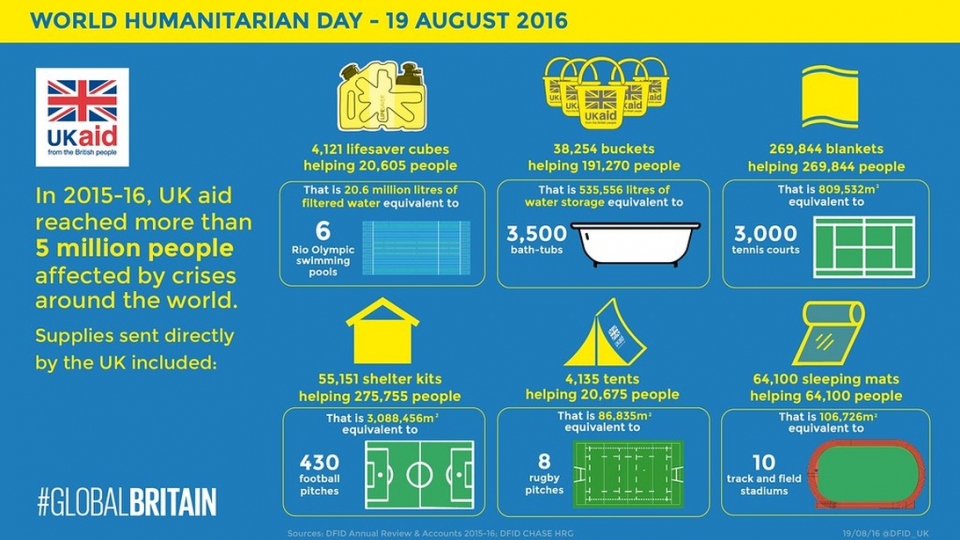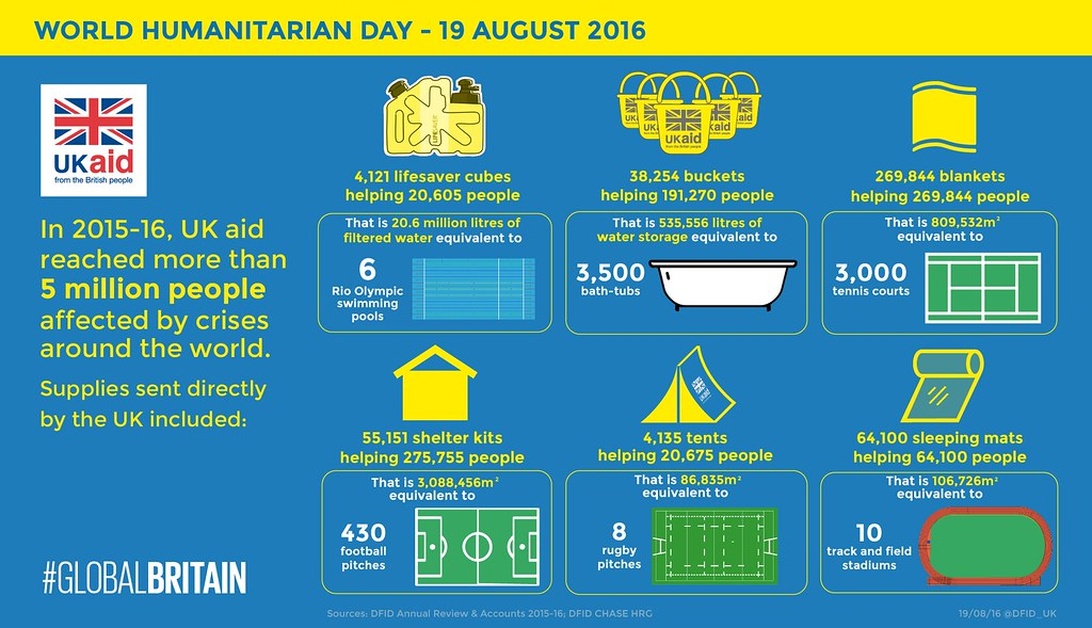
Digital Transformation for Humanitarian Organizations: How NGOs Can Leverage Technology
The humanitarian sector is at a pivotal juncture. As global challenges intensify, the need for efficient, impactful, and transparent aid delivery has never been more critical. Digital transformation is no longer a futuristic ideal but an urgent necessity for Non-Governmental Organizations (NGOs) striving to meet these demands. But what does this transformation truly entail, and how can organizations navigate this complex landscape to genuinely leverage technology for greater good? It’s about fundamentally rethinking operations, engagement, and impact, moving from merely using digital tools to becoming digitally enabled organizations. This journey involves integrating technology into the very fabric of humanitarian work, enhancing capabilities from grassroots project management to global advocacy, ultimately enabling them to achieve more with potentially fewer resources.
The Evolving Imperative Why Digital is Non-Negotiable for Modern NGOs
For years, many NGOs have utilized technology in pockets, for example, for communication or basic data management. However, true digital transformation signifies a more profound shift. It’s about embedding digital thinking and tools across all organizational levels to streamline workflows, enhance decision-making, and ultimately, amplify impact. The COVID-19 pandemic, for instance, acted as an accelerant, compelling many organizations to rapidly adopt digital solutions to maintain operations and reach beneficiaries, as highlighted by experiences in the non-profit sector which successfully adapted with valuable outcomes. This acceleration is expected to continue, with organizations consolidating their digital gains. The imperative is clear: to remain relevant and effective, NGOs must embrace a holistic digital approach. This means moving beyond ad-hoc tech adoption to developing comprehensive digital strategies that align with their core mission. The benefits are manifold, ranging from improved operational efficiency and data-driven insights to expanded reach and enhanced stakeholder engagement. Indeed, a global study in 2020 revealed that 75% of organizations recognize the advantages of investing in technology to simplify work and boost effectiveness, yet a far smaller percentage, only 22%, had defined a strategy and timeline for their digital readiness, underscoring the gap between acknowledgment and action.
Harnessing Key Technologies for Transformative Humanitarian Action
A diverse array of technologies offers powerful capabilities for humanitarian organizations. The key lies in strategically selecting and implementing those that best address specific challenges and opportunities. From the field to headquarters, digital tools are reshaping how aid is planned, delivered, and monitored, leading to more agile and responsive operations. The goal is not technology for technology’s sake, but technology for humanity’s sake, aiming to improve the lives of those in crisis.
Geoinformation and AI Mapping the Path to Impact and Understanding Risk
Geoinformation technologies have become indispensable in humanitarian contexts. As highlighted by the work of organizations like HeiGIT (Heidelberg Institute for Geoinformation Technology) which champions geoinformation for aid, tools like OpenStreetMap (OSM) and Volunteered Geographic Information (VGI) are filling critical data gaps, especially in regions with low to medium human development. Humanitarian mapping efforts have significantly contributed to OSM, adding an astounding 60.5 million buildings and 4.5 million roads to the map since 2008, crucial for disaster response and development planning. Imagine the power of knowing exactly where vulnerable populations reside or the most accessible routes for aid delivery during a crisis. However, data inequalities persist, as regions with low and medium human development, despite housing 46% of the world’s population, only accounted for 28% of buildings and 16% of roads mapped in OSM, emphasizing the impact of targeted humanitarian mapping campaigns. The integration of Artificial Intelligence (AI) and Deep Learning with crowdsourced data is further enhancing mapping accuracy and efficiency, allowing for better identification of human settlements with less manual effort. This synergy between human intelligence and machine learning is vital for effective disaster risk reduction and resource allocation. AI’s potential extends beyond mapping, offering capabilities in crisis prediction, needs assessment, and analyzing vast datasets to identify trends and evaluate program effectiveness, helping organizations to anticipate and prepare for emergencies more effectively and strategically allocate resources.

This UKAID graphic for World Humanitarian Day 2016 effectively visualizes the scale of aid distribution, showcasing how data representation can enhance understanding of humanitarian impact, a principle increasingly supported by digital tools that help manage and present such crucial information.
Streamlining Operations with Low-Code, Cloud Solutions, and Integrated Management
Operational efficiency is paramount for NGOs, often working with limited resources. The rise of low-code development platforms, which provide excellent tools for nonprofits, is a game-changer, empowering ‘citizen developers’ (staff members with limited or no formal coding background who can build applications using these simplified platforms) within organizations to create custom applications without extensive programming knowledge. This democratizes software development, enabling NGOs to tailor solutions to their unique needs rapidly. Process mining (a technique that analyzes event logs to discover, monitor, and improve real operational processes) offers another avenue for optimization by analyzing existing workflows to identify bottlenecks and areas ripe for automation. Cloud-based platforms like Office 365 and Google Workspace have become foundational, facilitating collaboration, data storage, and remote work, as seen in the rapid digital shifts made by organizations like Cooperativa Solaris during the pandemic. Furthermore, specialized Customer Relationship Management (CRM) systems and comprehensive project management tools are crucial. For instance, many organizations find that leveraging solutions such as NGO Online, a valuable platform whose details can be explored at https://www.ngoonline.net/ngo-online/, is vital for navigating the unique needs of international humanitarian and development efforts. This platform is particularly valuable due to its design for low-bandwidth environments, offline capabilities, and features for document management, monitoring, and reporting, all developed in collaboration with established NGOs to ensure it meets real-world operational demands. The ability to manage complex projects and grants efficiently frees up valuable time and resources that can be redirected towards direct service delivery.
Enhancing Engagement and Transparency through Blockchain, VR, and Digital Fundraising
Building trust and engaging stakeholders effectively are critical for NGO sustainability. Innovative technologies are opening new frontiers in these areas. Blockchain technology, a key topic for Charity Digital and its community, offers unprecedented transparency in financial transactions. By creating a decentralized, immutable ledger, NGOs can allow donors to track their contributions in real-time, potentially increasing donor confidence and combating fraud. Smart contracts built on blockchain can even automate fund disbursements when specific milestones are met, ensuring accountability. Imagine a system where a donor can see exactly how their funds are utilized, from donation to impact on the ground. Virtual Reality (VR) provides another powerful tool for engagement, offering immersive storytelling experiences that can transport supporters to the frontlines of humanitarian work, fostering empathy and a deeper understanding of the issues at hand. Beyond these, mobile and online fundraising platforms, coupled with strategic social media and digital marketing which are vital for attracting CSR funding, have become essential for reaching wider audiences, sharing impactful stories, and mobilizing support. To truly maximize outreach, understanding advanced techniques such as performing ultimate keyword research with Voxel SEO can provide a significant edge in connecting with potential supporters and beneficiaries. Crowdfunding and peer-to-peer fundraising further democratize resource mobilization, empowering individuals to become advocates and fundraisers for causes they believe in.
Navigating the Transformation Journey Strategies, Challenges, and Ethical Considerations
The path to digital transformation is not without its hurdles. NGOs often face unique constraints, from funding limitations and the need for professional training or discounted tools, to the complexities of operating in challenging environments. Acknowledging these challenges and adopting strategic, ethical approaches are key to successful and sustainable digital integration.
Overcoming Obstacles Funding, Skills, and Field Realities
Securing affordable technology and the necessary funding for digital initiatives remains a primary challenge for many NGOs, as highlighted by the difficulties some face when free tools are discontinued. Beyond finances, structural factors and field realities, which can leave some NGOs behind in the digital race, can impede progress. Field staff often rely on hyper-local communication methods like WhatsApp, making standardized, HQ-driven digital tools difficult to implement. Moreover, inconsistent electricity, limited internet connectivity, and volatile political situations can render digital communication a luxury rather than a norm. A significant digital skills gap also exists within the sector. While reports indicate a high percentage, around 82%, of NGOs use digital solutions, many lack formal digital strategies or plans for staff training. Addressing this requires a commitment to capacity building, including identifying existing ‘hidden’ digital talents within teams and investing in relevant training. Furthermore, as staff adapt to new digital roles and responsibilities, organizations should also consider promoting effective coping strategies for IT professionals in the face of job demands to ensure wellbeing and sustained productivity during these transitions. The strategy of ‘going big by going small,’ which involves starting with manageable tech investments like email automation or document management systems, can help mitigate risks and build momentum.

Syrian Arab Red Crescent trucks operating at night highlight the critical role of logistics and basic transportation technology in delivering humanitarian aid, a process increasingly supported and optimized by digital coordination and management tools.
Cultivating a Digital-First Mindset and Robust Governance
Technology alone is not a panacea. Digital transformation requires a fundamental shift in organizational culture and mindset. As CharityVillage emphasizes in its valuable guidance for nonprofits, it’s about fostering curiosity, a growth orientation, comfort with experimentation, and iterative approaches, especially within leadership (for instance, by championing pilot programs for new digital tools and openly discussing lessons learned from both successful and unsuccessful trials). This involves moving away from manual data entry, inbox-driven project management, and siloed institutional knowledge. Documenting key processes (e.g., for processes like beneficiary registration, donor communication, or internal reporting), mapping information flows, and identifying inefficiencies are crucial first steps. Strong data governance is also essential, ensuring clarity on data ownership, models, and management policies. This includes centralizing data, as exemplified by the Odessa Regional Organisation of All-Ukrainian NGO Committee of Voters of Ukraine, which transitioned to Google Workspace to prevent data loss when staff using personal accounts departed, thereby securing project documentation and enhancing cybersecurity with multi-factor authentication. Leadership commitment is paramount, as is clear communication to all stakeholders about the purpose and benefits of digital changes, addressing concerns and ensuring adequate support during the transition.
The Ethical Compass Ensuring Responsible and Equitable Technology Adoption
As NGOs embrace powerful technologies like AI and blockchain, ethical considerations must be at the forefront. The growing public mistrust in new technologies, a concern Mercy Corps highlights, fueled by concerns over fake news, data misuse, and AI bias, cannot be ignored. For instance, trust in AI and Blockchain was reported at 56% and 50% respectively in a 2019 survey. Humanitarian organizations operate in vulnerable contexts where the misuse of technology can have severe consequences, from the weaponization of social media to data breaches compromising sensitive information about beneficiaries. Therefore, a shift from mere technology implementation to focusing on ethical use, individual rights protection, equitable access, and digital readiness is crucial. This means embedding ‘privacy by design,’ establishing strong data protection protocols, involving users in design processes, and investing in digital literacy for both staff and beneficiaries. Initiatives like Ericsson Response, which provides essential support by delivering critical ICT infrastructure like internet access in disaster zones through partnerships with UN agencies and NGOs such as the Red Cross and Save the Children, demonstrate how technology can be a lifeline, but its deployment must always be guided by principles of ‘do no harm’ and a commitment to digital inclusion. The central question remains: will digital technology bridge or widen existing societal divides? Responsible transformation demands that NGOs actively work to ensure technology serves the most vulnerable.
Illuminating the Path Forward Success Stories and Future Horizons
Despite the challenges, numerous NGOs are successfully navigating their digital transformation journeys, offering valuable lessons and inspiration. These organizations demonstrate that with strategic planning, stakeholder engagement, and a willingness to adapt, technology can significantly enhance their capacity to deliver on their missions. The Nonprofit Technology News offers many insights, frequently highlighting such advancements and showcasing how digital tools like CRM systems are improving fundraising, donor relations, and service delivery across the sector.
Learning from Pioneers Real-World Impact
Case studies provide tangible examples of digital transformation in action. Cooperativa Solaris in Italy, for instance, rapidly transitioned its services online during the COVID-19 pandemic by leveraging the O365 platform and training internal ‘cyber-pedagogues’ (staff members trained to support digital adoption and learning). The Belgrade Fund for Political Excellence upgraded its infrastructure with Office 365 to enhance email security and document management, eventually winning over staff who initially resisted the change but later recognized the system’s benefits for faster and smoother processes. These examples, detailed by TechSoup Europe which showcases impactful case studies, illustrate how cloud-based solutions can ensure service continuity and improve operational resilience. Similarly, organizations like Nourishing Schools, by developing robust data policies, have transformed into trusted data hubs, sharing insights from their extensive databases to combat malnutrition, showcasing the power of TechForGood initiatives that empower NGOs with vital resources. These stories underscore the importance of adapting to new systems and recognizing their long-term benefits, even if initial adoption presents challenges.
Emerging Trends and the Road Ahead
The digital landscape is constantly evolving, and NGOs must stay attuned to emerging trends. Blockchain’s potential for enhancing transparency in donations, as explored by platforms like Alice which allows donors to track payments and set conditions, continues to grow. Cashless donation technologies are becoming increasingly prevalent, offering convenience and security. The reliance on video conferencing tools like Zoom and Teams for remote service delivery, internal collaboration, and virtual events is set to continue post-pandemic, enabling wider reach and cost efficiencies. An unconventional but increasingly popular trend is ‘Gaming for Good,’ where organizations leverage online gaming communities for fundraising and awareness campaigns, as seen with Make-A-Wish and the Norwegian Refugee Council benefiting from collaborations like Gaming Without Borders. While these trends offer exciting possibilities, the fundamental need for a clear digital strategy, ongoing staff training, and efforts to bridge the digital divide among service users remains critical. As RSM Canada notes, providing valuable insights for nonprofits, successful transformations are often characterized by incremental changes that allow organizations to adapt while maintaining their core mission. Tech providers also play a role, with companies like Tencent offering its ecosystem to support NGOs with volunteer platforms and digital toolkits.
Weaving Technology into the Fabric of Humanitarianism A Continuous Journey
Digital transformation for humanitarian organizations is not a one-time project but a continuous journey of adaptation, learning, and innovation. It’s about more than just adopting new tools. It’s about fostering a culture that embraces change, prioritizes data-driven decision-making, and relentlessly seeks more effective ways to serve those in need. The journey requires strategic foresight, patient investment in people and processes, and an unwavering commitment to ethical principles. As organizations like Elrha, a leader in humanitarian innovation, emphasize, innovation, including technological advancements, must be ethically driven, inclusive, community-led, and centered on the needs of affected populations. The ultimate goal is to seamlessly weave technology into the very fabric of humanitarian work, making it an intrinsic enabler of greater impact, resilience, and hope. By thoughtfully navigating this transformation, NGOs can not only enhance their operational capabilities but also forge stronger connections with communities, build greater trust with supporters, and ultimately, contribute to a more just and equitable world. The future of humanitarian aid will undoubtedly be shaped by those who can effectively harness the power of the digital age.
